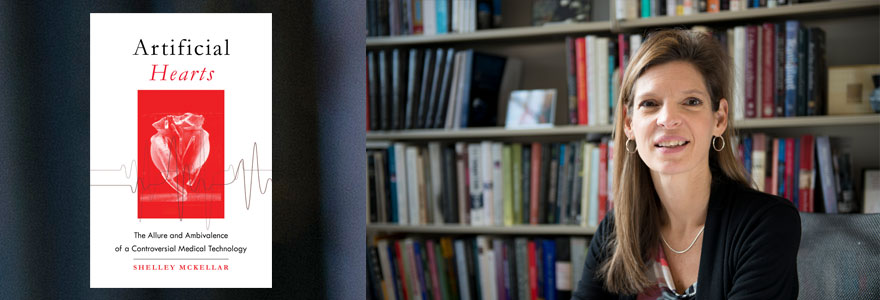News and Updates
Contact
Faculty of Social Science
Social Science Centre
Room 9438
Western University
T. 519-661-2053
F. 519-661-3868
E. social-science@uwo.ca
New book gets to the heart of the matter
January 30, 2018
Story by Rob Rombouts / photo submitted
The heart is physically and symbolically one of the most important organs in the human body. As such, efforts to repair or replace hearts are celebrated among the highest achievements in modern medicine.
Shelley McKellar examined the history of these efforts in two recent works: “Clinical Firsts – Christiaan Barnard’s Heart Transplantations” published in the December 7, 2017 issue of the New England Journal of Medicine and her book Artificial Hearts: The Allure and Ambivalence of a Controversial Medical Technology, published in January 2018.
McKellar is Associate Professor in the Department of History and holds the Hannah Chair in the History of Medicine.
McKellar was drawn to the story of the artificial heart because she “thought it would be a great case study of a failed technology.”
While the first total artificial heart implant occurred in 1969, the progress on the technology and methods was not always successful. Even today technological, medical and bio-ethical concerns exist around the process.
“There are a couple of key parts in its history that should have broken the march toward progress,” said McKellar. “The allure of it was enough to offset the ambivalence of the flawed technology.”
“There is an allure of replaceable parts,” said McKellar. “The desirability of these objects kept the drive for an artificial heart beating.”
But, McKellar points out, the artificial heart was also called “The Dracula of Medical Technology” in a New York Times op-ed piece, as it sucked significant resources away from other potential projects.
The adoption of artificial hearts has changed how we define concepts in society, including death, said McKellar. “A person can still be alive after the heart has stopped beating. The heart has become an organ. It’s a pump and we can fix a pump.”
This view also determined how early researchers defined success. “The initial focus of the heart as a pump was to create a pump that worked,” said McKellar. “As research continued, it became more than efficacy (does it work?) but also effectiveness (does it help the patient?). The focus became how long does it help people survive, and what kind of life can they live.”
For McKellar, the story of artificial hearts and heart replacement reflects the values, expectations and limitations of medical technology.
“It’s an interesting case study,” said McKellar. “Just because we can, should we spend so much on what is essentially a therapy for end-stage chronic disease? We could instead focus on other treatments, introduced earlier, and, of course, prevention.”
Artificial Hearts was published by Johns Hopkins University Press. The book includes colour photos, the publishing of which were supported by the J.B. Smallman Research Fund.

